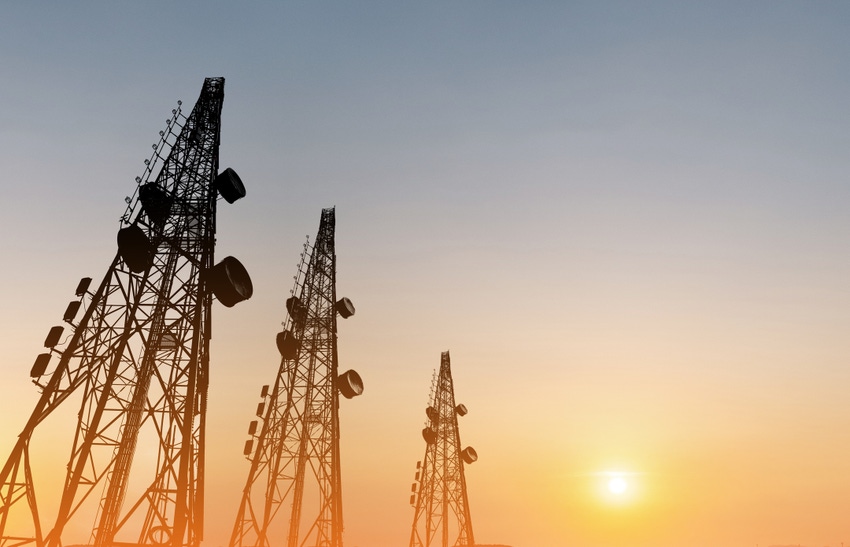Huawei: Antenna Innovation Facilitates Mobile Network Evolution Towards 5.5G

Antenna innovation will be fundamental to the success of operators’ 5G and 5.5G business. This is the firm view of Eric Zhao, President of Huawei Antenna Business Unit. “If wireless networks are to evolve, antennas must meet new and changing operator requirements compared to past traditions,” he says.

Eric was speaking to Telecoms.com at the recent Global Mobile Broadband Forum held in Dubai.
The overarching theme of the event was “Bring 5.5G Into Reality,” something which Eric argued could only be done efficiently by paying significant R&D attention to improving antenna performance and addressing “operator pain points” related to deployment, energy consumption and O&M.
“Our goal is to improve user experience, which includes better downlink throughput and stronger uplink capabilities,” continued Eric. “We aim to help telcos aggregate more frequency bands and networking modes through the next wave of antenna deployment.”
Huawei’s ‘three zeros’
In terms of antenna evolution, Huawei is thinking more about the critical role of antennas in networks and how antennas can better serve network performance enhancements, help operators meet their network deployment targets, and increase network O&M efficiency. Three specific goals have been set: unrestricted deployment, no signal loss, and O&M without the need for physical site visits. Huawei summarizes the trio of targets as ‘zero limit’, ‘zero loss’ and ‘zero touch’.
“In the future there will be more frequency bands and more advanced wireless technologies deployed in limited site space,” Eric said in explanation of ‘zero limit’. “That’s why we’re increasing integration of our antenna equipment and innovating with new antenna form factors to support telcos in overcoming the challenges of site space and load limitations.”
Zero loss refers to minimizing loss in wireless propagation paths from base stations to user equipment devices, and maximizing RF transmission efficiency of antennas. “This will lead to greener networks, with lower energy consumption and higher network performance,” added Eric.
The third direction of Huawei’s antenna R&D effort, zero touch, is aimed at removing the need for technicians or engineers to do site visits, which is costly, time consuming and inefficient. “We are committed to enabling network optimization through remote antenna adjustments, and so help operators realize their full network performance potential,” said Eric.
From theory to practice
In all three areas Eric highlighted solid progress made by Huawei through converting theoretical innovations into practical solutions. In 2019, as part of its push on ‘zero limit’, Huawei integrated active and passive antennas into one box. The active antenna supports massive MIMO for 5G NR, while the passive antenna supports sub-3GHz spectrum.
Furthermore, the new Active + Passive integrated solution upgrades passive antennas to full-frame electromagnetic transparency. That means passive antennas can be integrated with various massive MIMO antennas in different frequency bands and form factors, helping operators overcome site space limitations, reduce deployment costs, and accelerate the deployment of additional massive MIMO supported by 5G frequency bands. This will become an even more pressing operator requitement as the number of massive MIMO antennas increases with the rollout of 5G-Advanced networks. “The Active + Passive integrated solution has already been commercially deployed by global telcos,” remarked Eric.
On ‘zero loss’, Eric says Huawei has already achieved antenna energy efficiency close to the theoretical max. It is an important part of Huawei’s broader efforts on making networks greener through more efficient antennas. In 2021, Huawei introduced its Green Sky Program, setting out the goals and directions of antennas’ green innovation. The program is intended as an industry reference for green development.
“It’s a programme we announced for the entire antenna industry, focusing on the efficiency of antennas,” said Eric. “This includes multiple different dimensions: antenna energy efficiency; green antenna deployment; and green antenna manufacturing.”
Zero touch, the toughest challenge
Of the three zeros, says Eric, zero touch is the most difficult to achieve. Even so, progress in optimizing O&M is being made.
“In the past antennas have always been dumb equipment, unable to provide any information to networks, whether it be location or their status,” he said. “That’s why we’re increasing the digital capabilities of our antennas so that operators can perform remote management, remote maintenance and remote adjustment of antenna to achieve an optimal performance of the entire network. That’s our direction of antenna evolution from 5G to 5.5G.”
Helping to achieve remote adjustment is Huawei’s launch of the Marconi antenna platform, which integrates a Remote Azimuth Steering (RAS) functionality. In traditional antenna platforms, only the downtilt can be adjusted remotely. “In pilots with operators, we’ve already implemented the azimuth adjustment features, which has led to single to double digit percentage improvements in both coverage and capacity.”
Another advantage of the Marconi antenna platform, which uses a cylindrical design, is that wind load is reduced by more than 50% compared with traditional panel design antennas. This makes deployment easier, faster and cheaper, while also having the potential to be more environmentally friendly, through reducing needs for steelwork in sites.
Eric maintains that as a result of Huawei’s R&D, antennas have become an “essential and integrated part” of wireless networks. “This is something other antenna solution providers cannot do, as it requires deep RAN network E2E insights and optimization of solutions. And we’ll keep on encouraging antennas to be an integrated part of wireless networks so antenna solutions can be in sync with the evolution pace of wireless networks and better serve our customers.”
About the Author(s)
You May Also Like









.png?width=300&auto=webp&quality=80&disable=upscale)

_1.jpg?width=300&auto=webp&quality=80&disable=upscale)


.png?width=800&auto=webp&quality=80&disable=upscale)